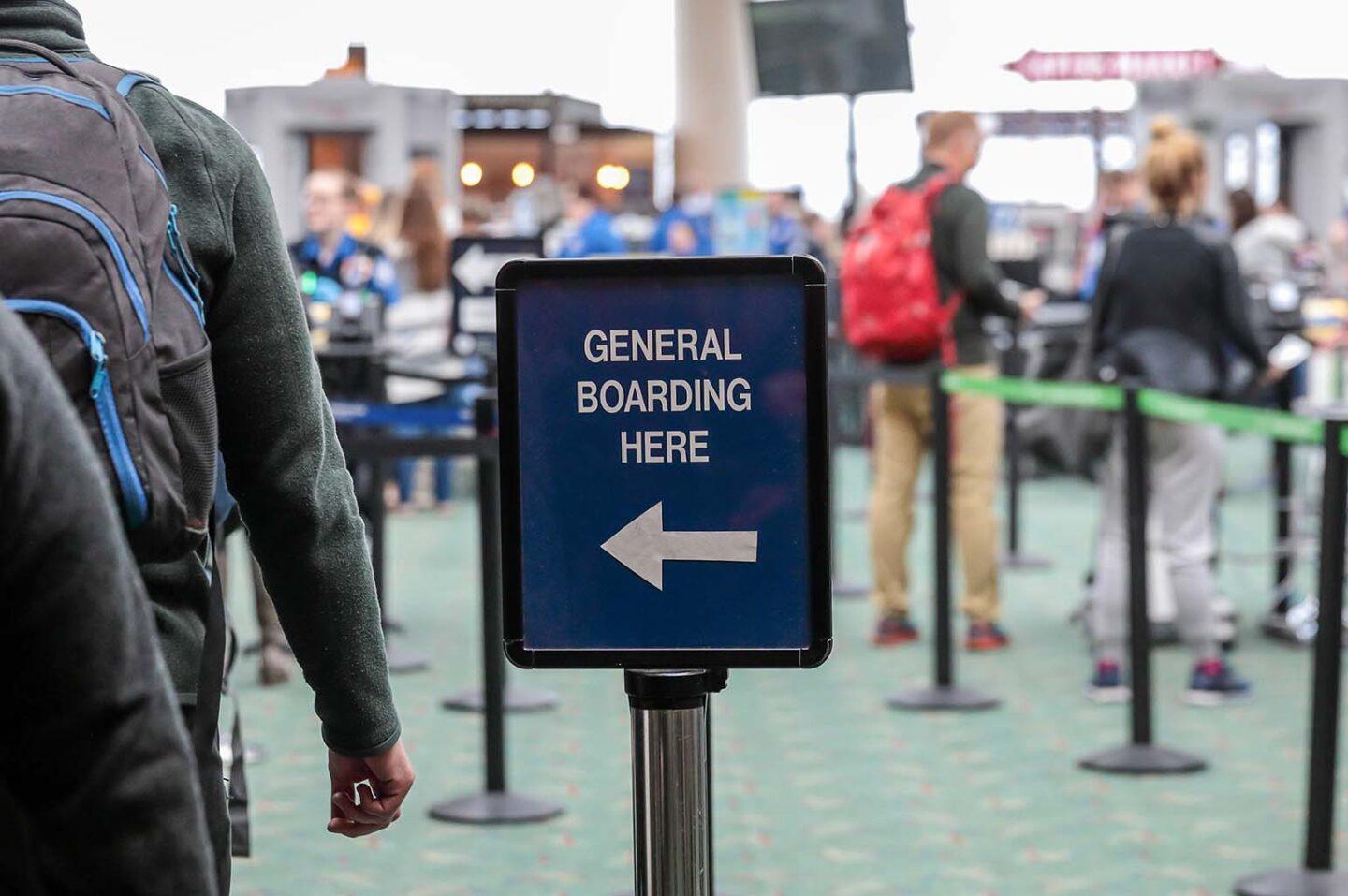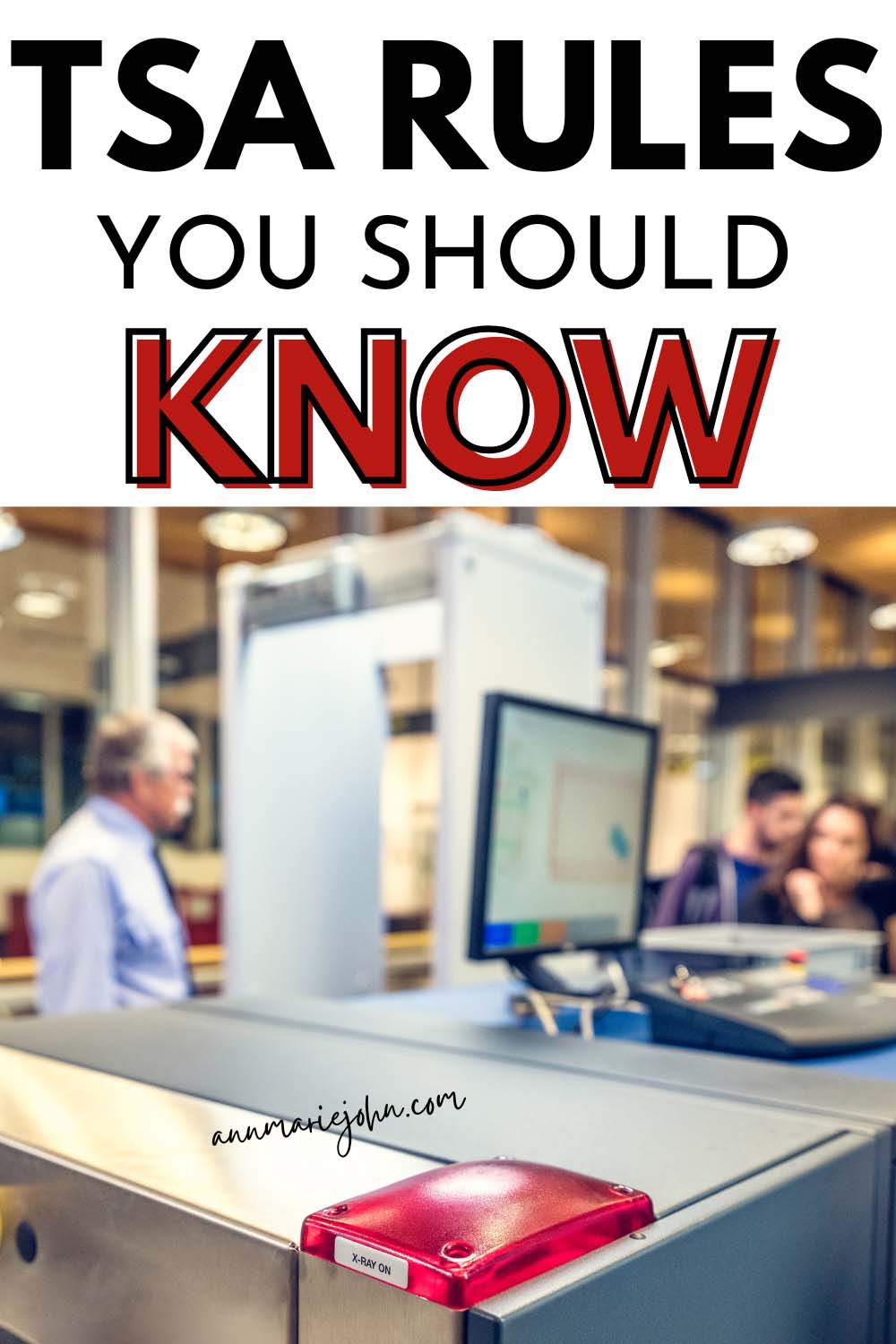Save time at airport security with a quick guide to TSA rules and regulations. Stay informed and breeze through the checkpoint hassle-free.

Do you know the Transportation Security Administration’s (TSA) rules? Everyone despises having to go through airport security. Nobody likes being kept up at a security checkpoint because someone forgot to remove their shoes or take their computer out of their carry-on luggage. Knowing the rules and regulations ahead of time will help you move this process along faster.
Because you’re probably already familiar with the most basic Transportation Security Administration (TSA) regulations, we’ll also focus on some of the less well-known criteria for air travel. After reading these suggestions, you’ll look like a TSA pro.

Identification and Boarding Pass
Before entering the TSA security checkpoint, travelers are required to present valid identification and their boarding pass. Acceptable forms of identification include a driver’s license, passport, or military ID. It’s essential to ensure that your identification is current and matches the information on your boarding pass to prevent any delays or issues during the screening process.
For international travel, a passport is typically required, along with any necessary visas or entry documents for the destination country. Be sure to check the specific entry requirements for your destination well in advance of your trip to avoid any last-minute complications.
Clothing and Footwear
When passing through TSA security checkpoints, travelers are required to remove certain clothing items and footwear for screening. This typically includes jackets, coats, belts, and shoes. These items must be placed in a separate bin for X-ray screening to ensure that there are no prohibited items concealed within them.
To streamline the screening process, consider wearing easily removable shoes and minimal metal accessories. This can help reduce the time spent removing and repacking items during security screening. Additionally, be prepared to comply with any additional screening procedures that TSA personnel may request, such as a pat-down or additional X-ray screening.
Drones Are Allowed
Drones are becoming increasingly popular among frequent travelers who wish to capture overhead images and movies of their latest excursion. The good news is that the Transportation Security Administration (TSA) allows drones to pass through security procedures. However, it is necessary to confirm with your airline before carrying your drone onboard the plane. Some airlines do not allow drones on their planes, despite the fact that the Transportation Security Administration allows them through security.
Electronics and Laptops
Electronic devices such as laptops, tablets, e-readers, and cameras are commonplace in carry-on bags. When passing through TSA security checkpoints, these items must be removed from their cases or bags and placed in a separate bin for X-ray screening. This ensures that security personnel can obtain a clear image of the electronic devices without obstruction.
To expedite the screening process, consider packing electronic devices in an easily accessible compartment of your carry-on luggage. Additionally, familiarize yourself with any specific TSA guidelines regarding the transportation of electronic devices, especially if you’re traveling internationally.
Oversized Electronics and Power Banks
While most electronic devices are allowed in carry-on luggage, travelers should be aware of restrictions regarding oversized electronics and power banks. Devices larger than a standard smartphone, such as gaming consoles, DVD players, and large laptops, may require additional screening or may not be allowed in certain circumstances.
Additionally, power banks, also known as portable chargers, are subject to specific TSA regulations. Power banks must be carried in carry-on luggage and are limited in capacity to 100 watt-hours (Wh) per item. Power banks between 100 Wh and 160 Wh require approval from the airline prior to travel, while those exceeding 160 Wh are prohibited on aircraft. It’s essential to check the capacity of your power bank and ensure compliance with TSA guidelines to avoid any issues during screening.
Expensive Jewelry Can Stay On
For those who enjoy dressing up for travel, we have some excellent news. The Transportation Security Administration (TSA) really recommends that you leave your diamonds and other valuable jewelry on at the security checkpoint. Using this method, it is impossible for expensive objects to be stolen from your checked luggage or lost during the screening procedure. This will save time for the TSA agents while also keeping your belongings safe and secure. If your jewelry piece is particularly large or contains a significant amount of metal, you may be asked to remove it; nevertheless, in most cases, you will be permitted to continue wearing it.
You are Permitted to Bring Plants on Board the Plane
If you’re a plant aficionado or are traveling with a plant as a gift, there’s no need to mail it and pay for postage because the Transportation Security Administration (TSA) allows plants on airplanes. Providing your plant fits neatly into the overhead bin or beneath your seat, you are permitted to take it on a flight. That gorgeous cactus can be purchased at the airport gift shop in Phoenix, Arizona, so sure, you can get one. However, before you board the plane, double-check your state regulations to ensure that you are not transporting a forbidden plant across state lines. There may be restrictions in place from time to time owing to specific insects or plant diseases.
Inspection of Undeveloped Film Is Required
Traditional film cameras have made a significant resurgence, and traveling is an excellent time to take advantage of this trend. The TSA has received numerous complaints from travelers who claim that their undeveloped film has been destroyed during the screening procedure since officers must either open it or run it through an X-ray machine. During the screening process, request that your camera film be physically inspected to ensure that it does not become distorted or damaged. In order to receive assistance, you should notify a close officer at the security checkpoint (before your luggage are placed on the belt).
Eating Utensils is Allowed in Carry-On Luggage.
As a result of the environmental movement, many of us are choosing to use reusable dining utensils rather than disposable plastic forks, knives, and spoons when eating. Don’t worry about packing your travel-friendly utensils in your carry-on to ensure a hassle-free dining experience. Butter knives and forks with circular blades are permitted on planes, according to the Transportation Security Administration. It has never been easier to have an environmentally conscious attitude when traveling.
Solid Foods are Allowed in Carry-On Luggage
Are you returning from vacation with a batch of your favorite cookies or a special snack? It’s not a problem. The Transportation Security Administration (TSA) allows solid food in carry-on luggage. The administration does specify that any non-solid items must be placed in a sealed container before being placed in a quart-sized bag in order to comply with the liquid criteria of the administration.
The rules for bringing food in carry-on luggage have become more relaxed over the years, and you can now bring nearly any form of non-perishable food with you. According to the TSA’s Twitter account, some of the more unusual alternatives from former travelers that have been approved for transportation on the plane include gingerbread houses, pies, and casseroles. Visit the food section of the TSA’s website for further information on serving sizes and limitations.
Powders and Granular Substances
While liquids, gels, and aerosols are commonly known to be subject to TSA regulations, travelers should also be aware of restrictions regarding powders and granular substances. In June 2018, TSA implemented enhanced security measures for powders in carry-on luggage. Passengers are now required to place powders that exceed 12 ounces (350 milliliters) in a separate bin for X-ray screening. This includes items such as baby powder, protein powder, and powdered cosmetics.
To expedite the screening process, consider packing powders and granular substances in containers smaller than 12 ounces or transferring them into clear, resealable bags for easy inspection. If you’re unsure whether a particular powder is allowed in carry-on luggage, it’s best to check with TSA or pack it in checked baggage to avoid any potential issues at the security checkpoint.
Creams and Lotions are Considered to be Liquids by the TSA
According to the Transportation Security Administration, anything that can be poured, pumped, spread, squeezed, smeared, sprayed, or spilled is considered a liquid and must adhere to the 3.4 ounces or fewer guidelines. When you’re out shopping for mementos to pack in your carry-on bag, keep this in mind. This implies that popular items such as nut butter, sunscreen, face creams, and perfumes must be less than 3.4 ounces in weight, even if they are still in their original packaging and have not been opened. If you really must travel with such an item, pack it in a sealed bag and store it in your checked luggage.
Medications and Prescriptions are Permitted
Have you ever gotten ready to pack your prescription and wondered if you really needed to pack it in the original container? The Transportation Security Administration (TSA) makes it simple to transport pharmaceuticals. Providing that your checked or carry-on luggage passes through adequate screening, you are free to bring as much as you need with you. To transport a liquid drug, split it into a 3.4-ounce bottle and inform an officer at the checkpoint that you are transporting a liquid prescription. Remember that certain states have laws requiring prescription labels on medications, so make sure to check with your state’s rules before you go for your trip.
Sporting Equipment and Outdoor Gear
Travelers planning to bring sporting equipment or outdoor gear on their trip should be aware of TSA regulations regarding these items. While many sports equipment items, such as golf clubs, baseball bats, and fishing rods, are allowed in checked baggage, certain items may be subject to additional fees or restrictions.
It’s essential to check with your airline regarding specific guidelines for transporting sporting equipment and outdoor gear, as policies may vary. Additionally, consider packing these items in durable, protective cases to prevent damage during transit and ensure compliance with TSA regulations. Be prepared to undergo additional screening or provide documentation for oversized or unusual items to facilitate the security screening process.
Prohibited Items
TSA maintains a list of prohibited items that are not allowed in carry-on luggage or checked baggage. These items include weapons, explosives, flammable materials, and other dangerous objects. It’s essential to review the TSA’s list of prohibited items before packing to ensure compliance with regulations and avoid any potential fines or penalties.
In addition to physical items, certain substances and materials are also prohibited from being transported in carry-on or checked baggage. These may include certain types of batteries, fireworks, and hazardous chemicals. Familiarize yourself with the TSA’s guidelines regarding prohibited items to avoid any issues during the screening process.
Special Considerations
Travelers with special considerations, such as medical conditions or disabilities, may require additional assistance or accommodations when passing through TSA security checkpoints. TSA Cares is a program designed to assist travelers with disabilities and medical conditions by providing support and guidance throughout the screening process.
If you or someone you’re traveling with requires special assistance, such as wheelchair support or medical equipment screening, it’s advisable to contact TSA Cares in advance of your trip. This can help ensure a smooth and seamless experience at the airport, tailored to your specific needs.
In Conclusion
Understanding and adhering to TSA regulations is essential for a smooth and stress-free air travel experience. By familiarizing yourself with less well-known criteria such as powders, oversized electronics, medical and personal care items, and sporting equipment, you can ensure compliance with TSA guidelines and minimize the risk of encountering issues during security screening. Whether you’re traveling for business or leisure, proper planning and preparation can help make your journey through the airport as seamless as possible. Safe travels!
